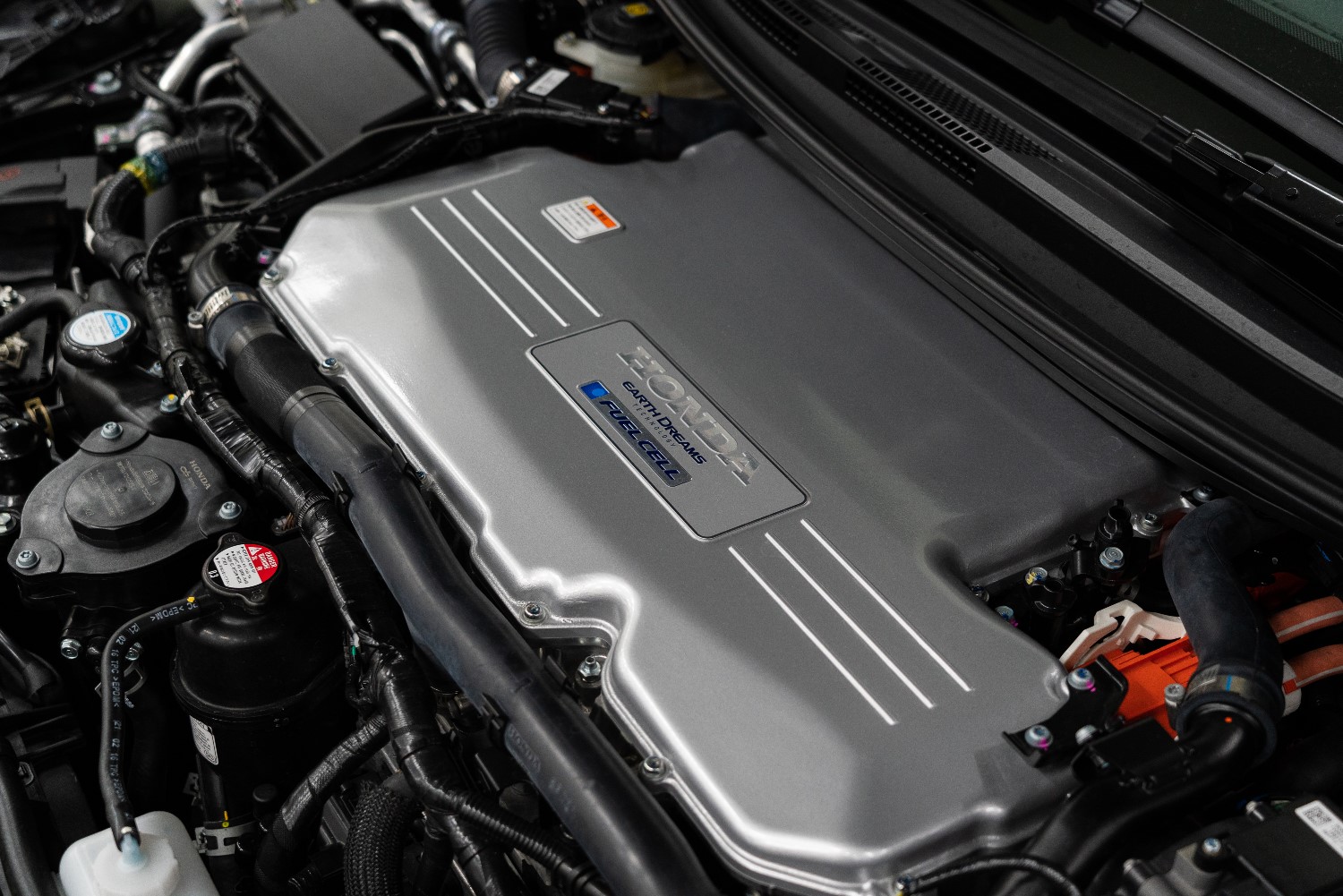Automotive: Honda To Begin U.S. Production of Fuel Cell Electric Vehicles in 2024
- New FCEV will be based on the all-new Honda CR-V, adding zero emissions and EV driving performance to America’s best-selling CUV of the past quarter century
- Production will occur at Performance Manufacturing Center (PMC) in Ohio, known for building small volume, specialty vehicles like the Acura NSX supercar
- First North American market FCEV to adopt a plug-in feature for EV driving
- 100% of Honda global auto sales will be electrified BEVs or FCEVs by 2040
Honda today announced that it will produce* an all-new hydrogen fuel cell electric vehicle (FCEV) based on the recently launched, all-new Honda CR-V starting in 2024 at its Performance Manufacturing Center (PMC) in Marysville, Ohio. This new zero-emissions vehicle will contribute to Honda’s previously announced goal to make battery electric vehicles (BEVs) and FCEVs represent 100% of its global auto sales by 2040.
The new CR-V-based FCEV also will mark North America’s first production vehicle to combine a plug-in feature with FCEV technology in one model, which enables the driver to charge the onboard battery to deliver EV driving around town with the flexibility of fast hydrogen refueling for longer trips.
“Honda established our goal to realize carbon neutrality by 2050 and the complete electrification of our vehicle lineup by 2040 is critical to achieving it,” said Gary Robinson, vice president of Auto Planning & Strategy for American Honda Motor Co., Inc. “As we accelerate our plan to produce Honda battery EVs in the United States, we also will begin low volume production of fuel cell electric vehicles there to further explore their great potential as part of a sustainable transportation future.”
The PMC was conceived as a small volume, specialty manufacturing facility, focused on craftsmanship and hand-assembled vehicles. Since opening in 2016, the PMC has been responsible for production of the Acura NSX supercar, multiple Acura PMC Edition vehicles (including TLX, RDX and MDX) along with Honda Performance Development race cars. This makes the PMC uniquely suited to production of high-quality FCEVs, which require special assembly procedures. This approach echoes the broad role that Honda’s Tochigi, Japan plant played in manufacturing both the original NSX supercar starting in 1989 and, later, the Honda FCX Clarity FCEV in 2008.
“Our associates at the Performance Manufacturing Center have really enjoyed the opportunity to successfully introduce several specialty vehicles into the market,” said PMC plant leader Gail May. “This facility is perfect for production of a new Honda fuel cell electric vehicle, as our small-volume capability enables us to really leverage the skill and expertise of our team to produce quality zero-emission vehicles here in North America.”
As America’s best-selling CUV of the past quarter century, the Honda CR-V will provide an excellent foundation for a FCEV, adding zero emissions and EV performance characteristics to its fun-to-drive personality, sporty styling, and outstanding utility, while retaining generous passenger and cargo spaces.
The all-new 2023 CR-V sets a new benchmark with a rugged and sophisticated exterior design, sporty and modern interior, increased space, comfort and performance.. This 6th generation CR-V is already playing a key role in the Honda electrification strategy with CR-V hybrid-electric models positioned at the top of the lineup and expected to represent about 50% of annual CR-V sales.
More details about the all-new FCEV version of the CR-V will be announced closer to its introduction in 2024.
Honda Fuel-cell Technology Leadership
Honda has long believed that FCEVs powered by hydrogen created through renewable sources will be a key part of a sustainable transportation future as they release no CO2 emissions, and water and heat are the only byproducts of electricity generation in the vehicle. In addition, where hydrogen refueling infrastructure is available, FCEVs can refuel in minutes, providing a familiar level of travel convenience for drivers accustomed to conventional automobiles.
An FCEVs carries a high-pressure hydrogen tank instead of a gasoline tank found on conventional vehicles and generates electricity inside fuel cells to drive the electric motor, moving the vehicle without releasing CO2 or any other harmful emissions.
Honda has led the industry for more than two decades in the development and deployment of fuel-cell technology through extensive real-world testing and customer deployments, including the first government fleet customers and first-ever retail customer leasing program.
Since the introduction of its first commercially available fuel-cell vehicle, the FCX, in 2002, Honda has made significant technological advancements in fuel-cell vehicle operation in both hot and freezing weather while meeting customer expectations and safety regulations.
In an effort to support the wider introduction of fuel-cell vehicles, Honda has invested more than $14 million in California’s hydrogen refueling network. This includes joining the public-private partnership H2USA in May 2013, which brings together automakers, government agencies, hydrogen suppliers, and the hydrogen and fuel-cell industries to coordinate research and identify cost-effective solutions to deploy infrastructure that can deliver affordable, clean hydrogen fuel in the United States.
Honda fuel cell technology milestones include:
- Honda FCX was the first EPA- and CARB-certified fuel-cell vehicle (July 2002)
- FCX was the world’s first production fuel-cell vehicle, introduced to the U.S. and Japan (December 2002)
- First fuel-cell vehicle to start and operate in sub-freezing temperatures (2003)
- First fuel-cell vehicle leased to an individual customer (July 2005)
- First manufacturer to build and produce a dedicated fuel-cell vehicle (FCX Clarity) on a production line specifically made for fuel-cell vehicles (2008)
- First automaker to create a fuel-cell vehicle dealer network (2008)
- Honda entered into a long-term collaborative agreement with General Motors to co-develop the next-generation of fuel-cell systems and hydrogen storage technologies (June 2013)
- As the next progression of Honda FCEVs, Honda introduced the Honda Clarity Fuel Cell (April 2017)
- Honda and GM announced a joint venture (Fuel Cell Systems Manufacturing) working toward mass production of lower cost, compact and high-performance fuel cell systems (2017)
